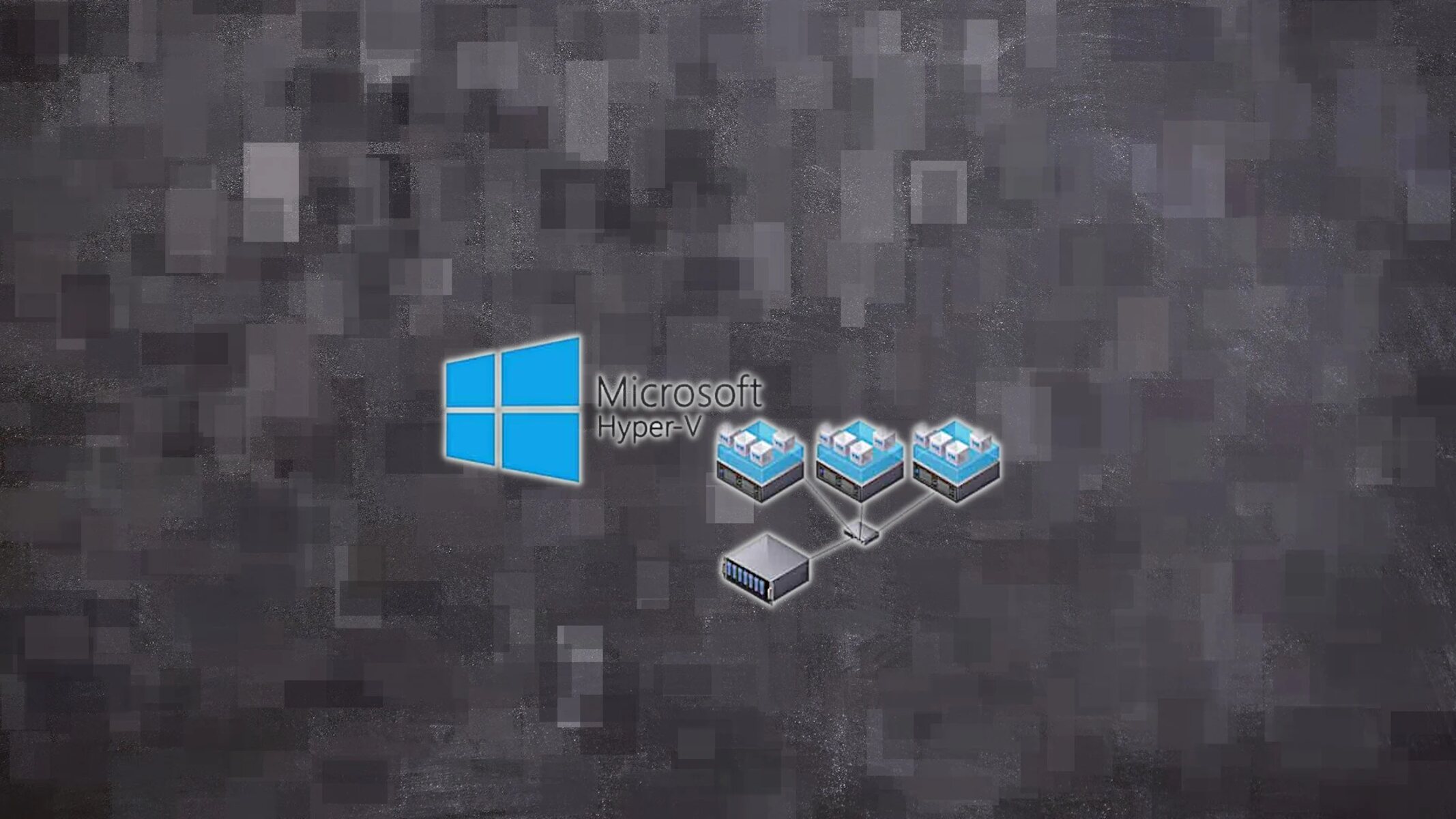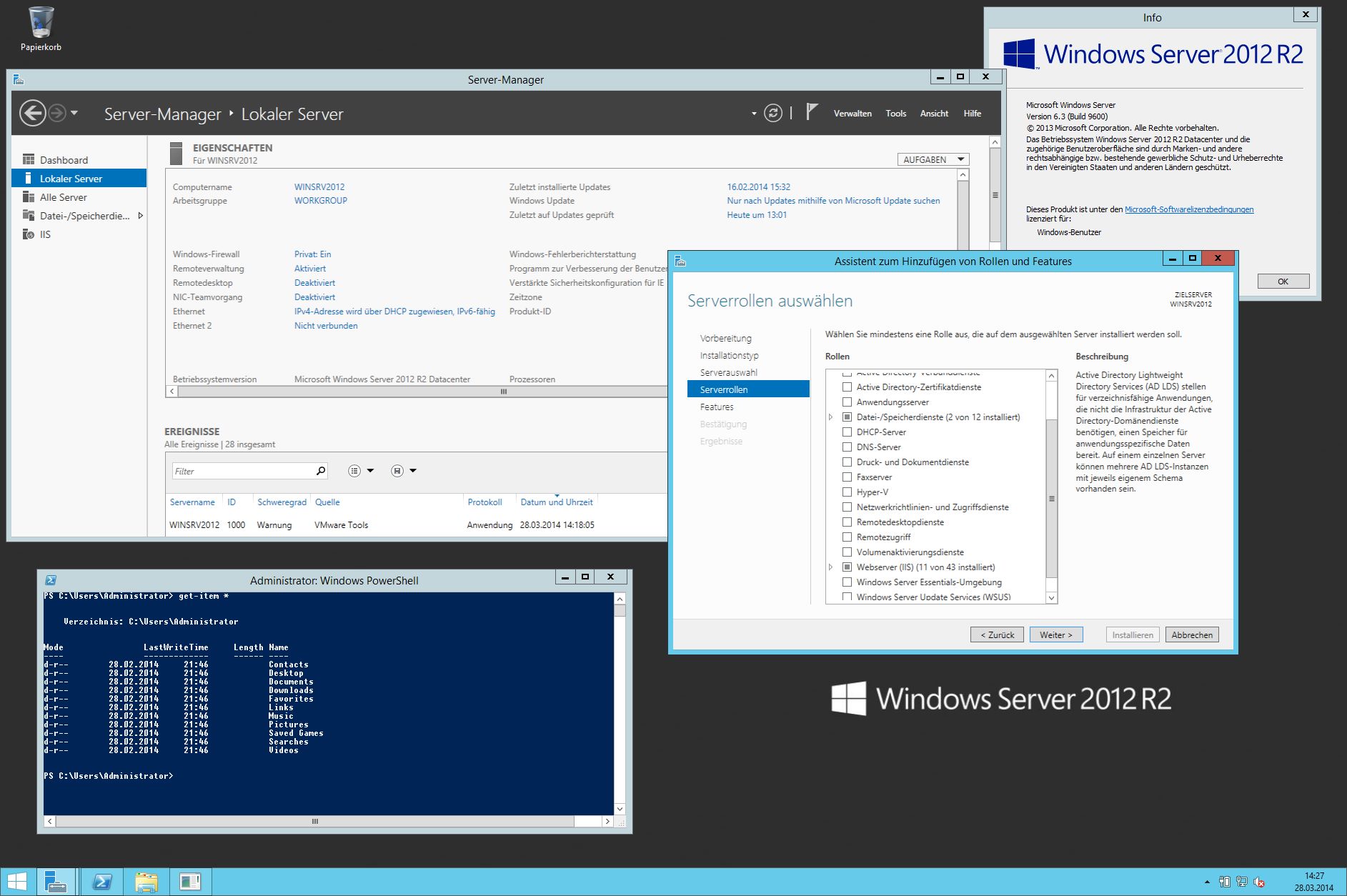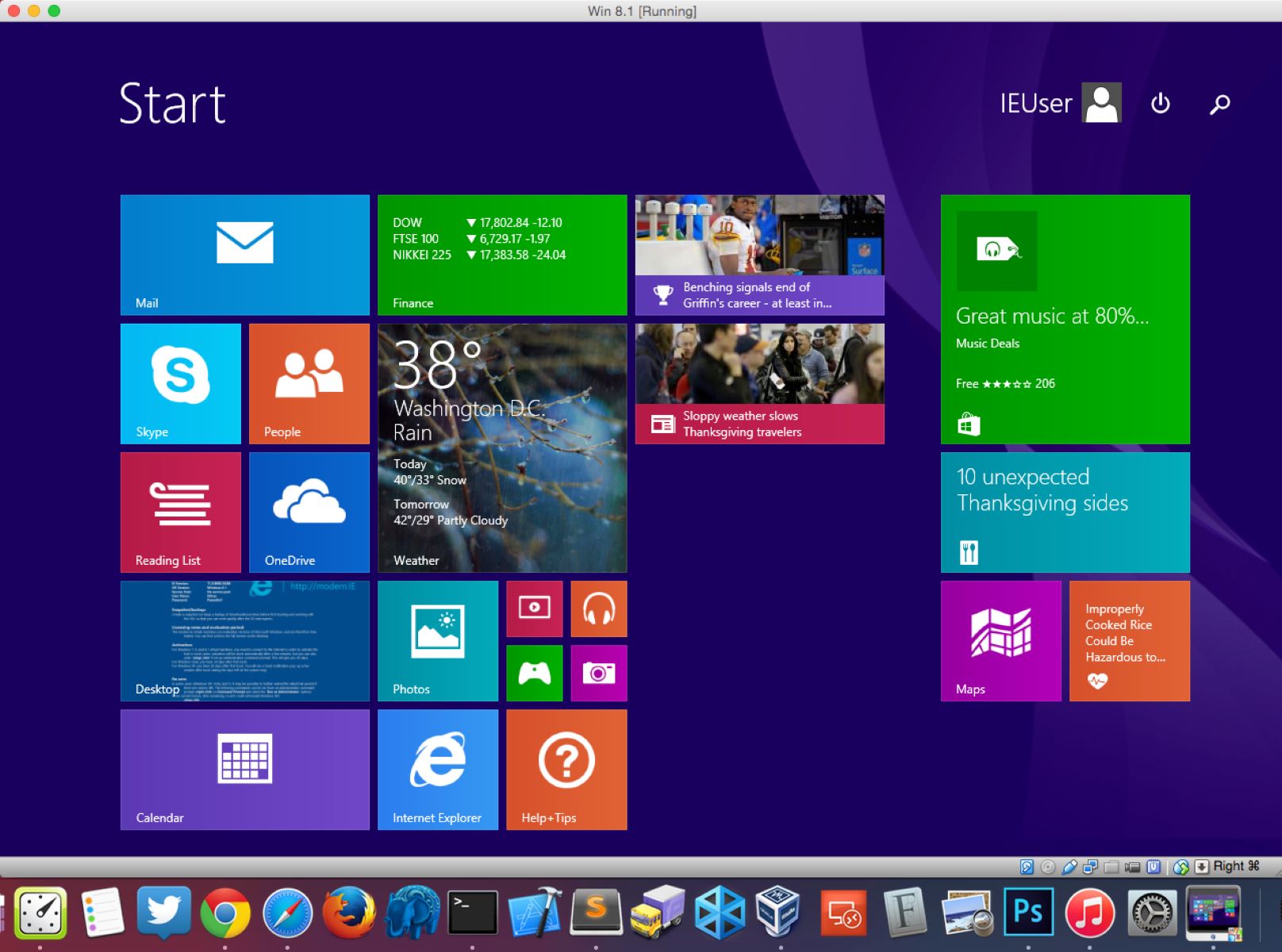Introduction
Welcome to this guide on how to add storage to a Hyper-V virtual machine. The ability to increase storage capacity in a virtual environment is crucial for maintaining optimal performance and accommodating growing data demands. In this article, we will explore different methods to add storage to your Hyper-V virtual machine and ensure that you have enough storage space for your virtualized applications and data.
Hyper-V is a popular hypervisor that allows you to create and manage virtual machines on Windows-based servers. By default, a virtual machine is provisioned with a fixed amount of storage space. However, there are scenarios where you may need to increase the storage capacity of a virtual machine.
This guide will cover multiple methods for adding storage to a Hyper-V virtual machine. These methods include:
- Adding a virtual hard disk using the Hyper-V Manager.
- Using PowerShell commands to add a virtual hard disk.
- Adding a physical hard disk directly to the virtual machine.
- Extending an existing virtual hard disk.
Each method has its advantages and is suitable for different scenarios. By understanding and utilizing these methods, you will have the necessary skills to expand the storage capacity of your Hyper-V virtual machines to meet the needs of your applications and users.
Please note that the methods described in this guide assume you have a basic understanding of Hyper-V and have an existing virtual machine set up. If you are new to Hyper-V, it is recommended to familiarize yourself with the basics before proceeding.
Now, let’s dive into each method and explore how to add storage to your Hyper-V virtual machine.
Prerequisites
Before you proceed with adding storage to your Hyper-V virtual machine, there are a few prerequisites that you should take into consideration:
- Hyper-V Enabled: Ensure that Hyper-V is enabled on your Windows-based server. If Hyper-V is not already enabled, you can do so by going to the “Turn Windows features on or off” option in the Control Panel.
- Virtual Machine: You should have an existing virtual machine set up and running in Hyper-V. This virtual machine is the one to which you will be adding the additional storage.
- Available Storage: Make sure that you have enough available storage on your server or storage device to accommodate the additional storage requirements. The amount of storage needed will depend on the size and type of virtual hard disk you plan to add.
- Administrator Access: To make changes to the virtual machine’s storage configurations, you need to have administrative access to the server where the virtual machine is hosted.
It is important to consider these prerequisites to ensure a smooth and successful process of adding storage to your Hyper-V virtual machine. Once you have met these requirements, you can proceed with the method of your choice to add the necessary storage to your virtual machine.
Now that we have covered the prerequisites, let’s move on to the methods of adding storage to a Hyper-V virtual machine. Each method offers different advantages and versatility in terms of expanding your virtual machine’s storage capacity.
Method 1: Adding a Virtual Hard Disk in Hyper-V Manager
If you prefer a graphical user interface (GUI) approach, adding a virtual hard disk in Hyper-V Manager is a straightforward method to increase storage capacity for your virtual machine. Here’s how you can do it:
- Launch the Hyper-V Manager by searching for it in the Start Menu or using the Run dialog (pressing the Windows key + R and typing “virtmgmt.msc”).
- In the Hyper-V Manager, locate and select the virtual machine to which you want to add the virtual hard disk.
- Right-click on the virtual machine and choose “Settings” from the context menu.
- In the Settings window, click on the “Add Hardware” option on the left-hand side.
- Select the “Hard Drive” option and click “Add” to proceed.
- In the “Select Virtual Hard Disk” window, choose whether to create a new virtual hard disk or use an existing one. If you choose to create a new disk, specify the size and location for the new virtual hard disk file. If you choose to use an existing disk, browse for the file in the appropriate location.
- Customize any additional settings, such as the disk format (VHD or VHDX) and storage type (fixed or dynamically expanding), according to your requirements.
- Click “Apply” and then “OK” to save the changes.
- Start the virtual machine if it is not already running.
Once the virtual machine has started, the newly added virtual hard disk will be available. You can then initialize and format it within the virtual machine’s operating system, just like any other disk.
Adding a virtual hard disk using Hyper-V Manager provides a simple and intuitive way to expand your virtual machine’s storage. However, it is important to ensure that you have enough physical storage space on your server or storage device to accommodate the new virtual hard disk.
In the next method, we will explore how to use PowerShell commands to add a virtual hard disk to a Hyper-V virtual machine.
Method 2: Using PowerShell to Add Virtual Hard Disk
If you prefer to use PowerShell commands for managing your Hyper-V environment, you can add a virtual hard disk to a virtual machine using PowerShell. This method provides more flexibility and allows for automation if you need to add multiple virtual hard disks or perform the task on multiple virtual machines. Here’s how you can do it:
- Open PowerShell with administrative privileges.
- Use the “Add-VMHardDiskDrive” cmdlet to add a new virtual hard disk to the desired virtual machine. Specify the virtual machine name using the “-VMName” parameter and provide the path to the virtual hard disk file using the “-Path” parameter.
- If you want to create a new virtual hard disk file, you can use the “New-VHD” cmdlet to create a VHD or VHDX file with the desired size and specifications. Then, provide the path to this newly created file in the “-Path” parameter of the “Add-VMHardDiskDrive” cmdlet.
- Customize any additional settings, such as the disk format (VHD or VHDX) and storage type (fixed or dynamically expanding), according to your requirements using the appropriate parameters.
- Run the command and verify that the virtual hard disk has been added to the virtual machine.
- Start the virtual machine if it is not already running.
Using PowerShell to add a virtual hard disk provides a flexible and efficient way to manage storage in your Hyper-V environment. You can easily create and add multiple virtual hard disks with specific configurations, and automate the process for easier management and scalability.
In the next method, we will explore how to add a physical hard disk directly to a virtual machine to further expand its storage capacity.
Method 3: Adding Physical Hard Disk to Virtual Machine
If you have available physical hard disks that you want to utilize directly within your virtual machine, you can add them to the virtual machine in Hyper-V. This method allows you to leverage the existing storage devices and maximize the storage capacity of your virtual machines. Here’s how you can add a physical hard disk to a virtual machine:
- Ensure that the physical hard disk you want to add is connected to the server hosting the Hyper-V virtual machine. It can be connected via SATA, SAS, or other supported connections.
- Open the Hyper-V Manager and select the virtual machine to which you want to add the physical hard disk.
- Right-click on the virtual machine and choose “Settings” from the context menu.
- In the Settings window, click on the “SCSI Controller” option on the left-hand side.
- Click on “Add” to add a new SCSI hard disk.
- In the “Add SCSI Hard Disk” window, select the “Physical Hard Disk” option and click “Next”.
- Choose the appropriate physical hard disk from the list of available disks and click “Finish” to complete the process.
- Click “Apply” and then “OK” to save the changes.
- Start the virtual machine if it is not already running.
Once the virtual machine starts, it will detect the newly added physical hard disk as if it were a directly connected disk. You can then initialize and format the disk within the virtual machine’s operating system.
Adding a physical hard disk directly to a virtual machine can be useful when you need to utilize specific storage devices or if you want to separate workloads onto different physical disks for performance optimization.
In the next method, we will explore how to extend an existing virtual hard disk to increase the storage capacity of a virtual machine.
Method 4: Extending Existing Virtual Hard Disk
If you find that the storage capacity of an existing virtual hard disk is running low, you can extend the disk to increase its size without the need to add a new disk. This method is ideal when you want to expand the storage capacity of a virtual machine while retaining the data and configurations already on the virtual hard disk. Here’s how you can extend an existing virtual hard disk:
- Open the Hyper-V Manager and select the virtual machine that has the virtual hard disk you want to extend.
- Right-click on the virtual machine and choose “Settings” from the context menu.
- In the Settings window, locate and click on the existing virtual hard disk on the left-hand side.
- Click on the “Edit” button to modify the virtual hard disk.
- In the “Edit Virtual Hard Disk” window, increase the size of the virtual hard disk either by entering a new size or using the slider.
- Click “Apply” and then “OK” to save the changes.
- Start the virtual machine if it is not already running.
Once the virtual machine starts, you will need to extend the partition within the virtual machine’s operating system to utilize the additional space on the extended virtual hard disk. This process may vary depending on the operating system you are using, but typically involves using disk management tools to resize and extend the partition to occupy the added space.
Extending an existing virtual hard disk is a convenient method to increase storage capacity without the need for additional virtual hard disks. By following these steps, you can easily accommodate growing storage requirements for your virtual machines.
With the various methods covered in this guide, you now have the knowledge and tools to add storage to your Hyper-V virtual machines according to your specific needs and preferences. Choose the method that best suits your requirements and ensure that you have the necessary resources and permissions to make the changes effectively.
Now that you are familiar with the different methods, you can confidently manage and expand storage capacity in your Hyper-V virtual machine environment. Get started and optimize your virtual machines by adding the necessary storage to support your applications and data.
Conclusion
Expanding storage capacity in your Hyper-V virtual machines is a critical task to ensure optimal performance and accommodate growing data demands. In this guide, we explored four different methods to add storage to your Hyper-V virtual machines: adding a virtual hard disk in Hyper-V Manager, using PowerShell to add virtual hard disks, adding physical hard disks directly to virtual machines, and extending existing virtual hard disks.
By following these methods, you can increase storage capacity according to your specific needs and preferences. Hyper-V Manager provides a user-friendly graphical interface for adding virtual hard disks, while PowerShell commands offer flexibility and automation for advanced users. Adding physical hard disks directly to virtual machines allows you to leverage existing storage devices, and extending existing virtual hard disks provides a convenient way to increase storage without adding new disks.
Before implementing any of these methods, ensure that you meet the prerequisites, such as enabling Hyper-V, having an existing virtual machine, and having enough available storage. Additionally, it is important to have administrative access to make changes to the virtual machine’s storage configurations.
Now that you have learned how to add storage to your Hyper-V virtual machines, you can confidently customize and optimize your virtual machine environment to support your applications and data. Evaluate your specific requirements and choose the method that suits your needs best.
Remember to consider the impact on performance, available resources, and scalability when making decisions about storage management in your Hyper-V virtual environment.
By effectively adding storage to your virtual machines, you can ensure a seamless experience for your users and maintain the efficiency and reliability of your virtualized applications. Keep exploring and leveraging the features and capabilities of Hyper-V to enhance your virtual machine infrastructure.
Start implementing these methods today and enjoy the expanded storage capacity of your Hyper-V virtual machines!

























